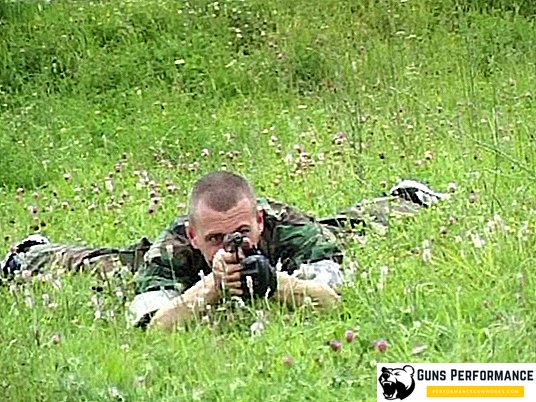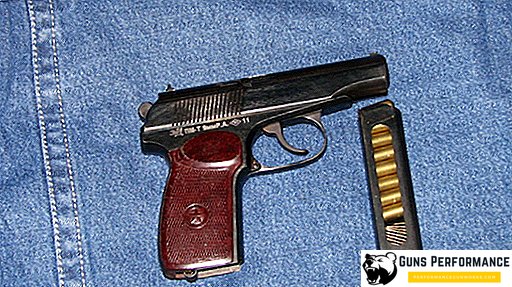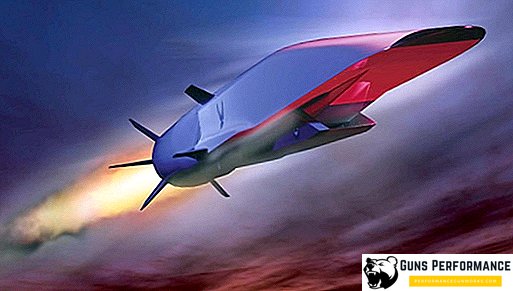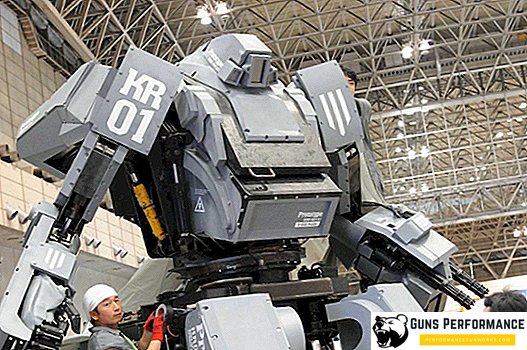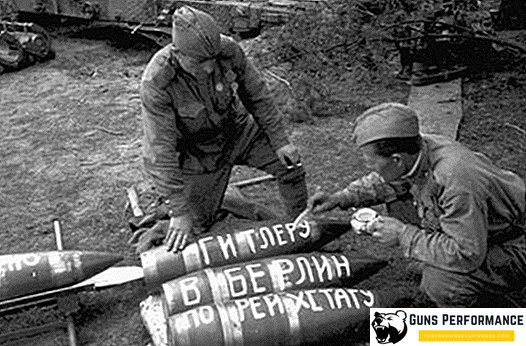The Tu-95 aircraft is a winged giant that personifies the Soviet military power - for the first time the roar of its engines came in the 1950s. The Tu-95 strategic bomber had extraordinary strength and unusual dimensions. Along with the strategic bomber B-52 of America, the strategic bomber Tu-95 is one of the few aircraft that was continuously in service for more than half a century and had excellent characteristics. In addition, it is one of the fastest propeller aircraft, which became a symbol of the Cold War. The Tu-95 had many modifications, based on current tasks. The last modification was created for the defeat of important objects with cruise missiles in the enemy's rear under any weather conditions, as well as at any time of the day.

When the West first learned about the TU-95 "Bear" in 1956, legendary revolutionary changes were taking place in aircraft industry: after the end of world war, jet technology developed rapidly. However, Medved had legendary turboprop engines, even then it seemed archaic. But no one imagined that even today, after 60 years, the Tu-95 will remain in the ranks of the Russian Air Force, and its reconnaissance aircraft, the noisiest in the world, will be used to patrol ocean waters as a strategic bomber. These legendary aircraft still serve the benefit of Russia.

Number of Tu-95
The bomber Tu-95 "Medved" was adopted by Russia about half a century ago, but most likely it will not be removed for another thirty years, like the version of the Tu-142. In its entire history, over 500 such aircraft were built. This is the fastest and largest turboprop aircraft in service today. For 2018, about 50 Tu-95MS vehicles remain in Russia (the missile-carrying version that has remained since the 1980s), including 15 Tu-142 used for naval intelligence. For 2018, the legendary Tu-95 “Bear” in the amount of several dozen is also stored in Russia in a mothballed state; they can be commissioned as naval reconnaissance aircraft or as bombers.

The history of the aircraft
Stalin met Tupolev in the early 1950s to discuss issues related to the creation of an ultra-long bomber. Stalin proposed to build a four-engine machine, thus solving the problem. The designer did not support this proposal. Jet engines consumed quite a lot of fuel and were not suitable for long-distance sorties. Tupolev decided to design a heavy bomber using turboprop engines to increase the range, but less speed.
By 1950, in Kuibyshevsky Design Bureau No. 276, under the direction of Nikolai Kuznetsov, the chief designer, an experimental version of the engine was created on the basis of the UMO-022 trophy engine, which Tupolev was extremely interested in. For this, he personally went to negotiate with them. As a result, a unique solution appeared - to create a pair-up of two engines, equipping the glider with an arrow-shaped wing. After determining the appearance of the new bomber and power plant, Tupolev again met with Stalin. During the meeting with the commander-in-chief, the fate of the future aircraft under the symbol 95 was decided positively.

The chief designer for the creation of the Tu-95 was N.I. Bazenkov. In 1951, the technical requirements for the bomber were obtained, and its preliminary design was organized. The first two prototypes were built at Aviation Plant No. 156 in Moscow. In 1952, in disassembled form, the first copy for carrying out factory tests was delivered to the city of Zhukovsky. In the same year, the first flight was made. Pilot machine "95-1" was run by pilot A.D. Flight. The test was successful and lasted until 1953. On the 17th departure onboard the third engine caught fire. Fire fighting system failed to cope. The captain ordered the crew to leave the plane, and he took the board back to the airport. However, in about 40 km the plane abruptly lost altitude and fell almost upright. Survived only 7 people from 11 crew members.

The second prototype turboprop drove about 2 years. It was equipped with new TV-12 (NK-12) engines. Turboprop aircraft took off in 1955 under the control of MA. Nyuhtikova. Legendary flight tests, which lasted 168 hours, a year later successfully completed. The Soviet Tu-95 Medved began to be supplied to the USSR Air Force since 1956. In 1957, released the first modification of the Tu-95M. The serial production of these models was carried out by the Kuibyshev Aviation Plant, which until 1958 built 50 Tu-95 and Tu-95M airplanes. Then the plant was reequipped for the manufacture of the Tu-95K missile carrier, the strategic aircraft was produced until the 1965s. In the 1970s, the strategic aircraft Tu-95 MS was built. Its serial assembly began in 1981 at the Kuybyshev aircraft factory and lasted until 1992. In total, 90 Tu-95MS aircraft were produced in Russia.

Specifications
The strategic aircraft Tu-95 has the following technical characteristics:
- Wingspan is 50 m.
- The length of the aircraft is 46.17 m.
- The height of the aircraft is 12.50 m.
- The wing area is 283.70 m2.
- The mass of an empty aircraft is 83100 kg.
- The maximum take-off weight is 172,000 kg.
- The maximum mass of fuel is 88700 kg.
- The type of engine is 4 TVD NK-12.
- Engine thrust is 4x12000 kgf.
- The maximum speed is 882 km / h.
- Cruising speed is 720-750 km / h.
- The practical flight range is 12100 km.
- The practical ceiling is 11900 m.
- The crew is 8-9 people.

Armament
Armament is 6 twin guns of AM-23 caliber 23 mm, which are located in 3 defensive installations: aft DK-12, lower DT-H12, upper DT-B12. The total ammunition is 2500 shots. Bombers can lift approximately 12 tons of combat load. Bombers can take with them 1500-9000 kg of free-fall bombs, both nuclear and high-explosive, which are suspended in the fuselage compartment.
Modifications
- Tu-95 serial modification of a bomber with bomb armament.
- Tu-95 order 244 - a Tu-95M serial aircraft with an increased fuel reserve.
- The Tu-95A is a strategic bomber with nuclear weapons, thermal insulation and a heating system for the bomb compartment, light curtains and with a special color.
- Tu-95K bomber with supersonic cruise missiles X-20.
- Tu-95U - educational modification of the Tu-95.
- Tu-95KU - educational modification of Tu-95K.
- The Tu-96 is a prototype of a strategic high-altitude bomber, a modification of the Tu-95 with increased wing area and additional TV-16 turboprop engines.
- The Tu-95N is the carrier aircraft of an RS outboard strategic bomber designed by P. V. Tsibina design bureau.
- The Tu-116 is a converted Tu-95 serial bomber into a long-range passenger aircraft.
- The Tu-95M is a modification of a strategic bomber using NK-12M engines.
- Tu-95M-5 is the carrier of CS KSR-5, experimental machine.
- Tu-95V - re-equipped Tu-95 for testing a thermonuclear super-power bomb (50-100 Mt).
- The Tu-95KD is a modification of the Tu-95K with an in-flight refueling system.
- Tu-95RTS - target designator for the Navy.
- Tu-95MR - strategic intelligence.
- Tu-95KM - the Kh-20M re-armed on the Kyrgyz Republic and the upgraded version of the Tu-95KD bomber.
- The Tu-95K-22 is the carrier of the K-95-22 missile system and the Kh-22 KR.
- Tu-95MS is the carrier of X-55 cruise missiles.
- Tu-95M-55 is a flying laboratory for the development of the Tu-95MS complex with X-55 cruise missiles.
- Tu-95LAL - flying laboratory to create an aircraft with a nuclear power plant.
- The Tu-119 is a flying laboratory (project) with two full-time NK-12M and two nuclear experimental power plants.

Design features
- The Tu-95MS is made on the basis of the Tu-142MK, is a cantilever all-metal mid-plane with four turboprop engines, which are located in the swept wings. Each engine has two metal coaxial four-bladed screws. The aircraft has an electric heating system for wing socks, propellers, keel and stabilizer. In the middle of the fuselage is the cargo compartment.
- Aircraft landing gear - tricycle. The nose support is retracted into the fuselage niche, the main supports - in the wing gondolas. The front support has a hydraulic system with a pressure of 150 kg / cm2, the main supports are equipped with MPSh-18MT electromechanisms.
- The crew is located in two hermit cabins. For members of the crew ejection seat is not provided. Emergency escape of the machine, if necessary, is done through the access hatch, which is located in the niche of the landing gear.
- The design of the screws and the high power of the engine causes its incredible noise. The Tu-95 aircraft belongs to the noisiest aircraft in the world; it is even easily detected by the submarine hydroacoustic systems, but this is not critical when launching nuclear missile strikes.
- The aircraft has an automatic engine start system. The fuel is located in 11 fuselage and wing caisson soft fuel tanks. The use of a screw unit with an efficiency of 82% and cost-effective TVD on the Tu-95 allowed us to achieve very high flight range performance, even though the aircraft has a relatively low aerodynamic design quality.



